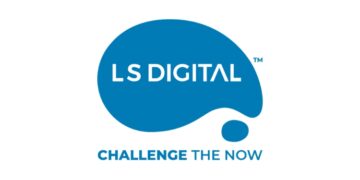Brands are recognizing that the 2021 consumer is different in terms of motivations, needs, behavior, and expectations. This is very important because there are changes in a consumer’s environment, lifestyle, and pain points. Empowered consumers are also now increasingly more active in engaging with brands, whether it is about sharing their views with others on social media or seeking information from the brand, or even registering a complaint.
Customer experience and satisfaction are critical in sectors like BFSI and especially in segments like life and health insurance after the recent pandemic. The last year or so has had the insurance industry firmly in the center of many discussions concerning everything from the way products are sold, the processes that engage with a consumer from pre-purchase to the claims stage, and most importantly the post-claim stage of the product and what is his/her experience concerning the product and the industry as a whole. One thing to note is that while insurance brands are at the forefront of CX and digital transformation there is still quite a journey to travel in meeting consumer expectations Customer expectations are at an all-time high. People expect fast, personalized service wherever and whenever they need it, and to compete, insurers need to offer the best, most seamless experiences possible across technologies, apps, communication, and customer service.
A whopping 3 in 4 customers reached out to their Insurers in the last 12 months for a large number of reasons. This statistic is of prime importance for insurers because it provides them with the chance to positively influence this active consumer’s experience via quality customer support.
Experience is key – the urgency shown in engagement by the brand matters
The first and most powerful insight is that customer engagement directly correlates with customer retention. As such, its positive impact on business profitability cannot be overemphasized, it saves insurers having to spend money to replenish the customer base switching to the competition and any new customers acquired are likely to stick with the brand beyond their first year. For instance, the Indian insurance industry still lacks transparency, and insurance policies are still mostly sold through agents. Policybazaar changed that largely by listing the small print of multiple insurance policies for purchasers to choose from. It began as a price-comparison website and an information portal for learning about insurance and insurance programs. The aim was to interact in an exceedingly better way with Indian insurance buyers; this made them launch a web platform to check and buy an insurance policy. The website subsequently expanded to become a marketplace for insurance policies. Policybazaar has also launched a website in regional languages to assist users to research and buy online in their linguistic communication. This in turn has helped customers understand the products better and made Policybazaar a trustworthy partner in aiding buying decisions of consumers in the insurance industry.
Traditional modes are still appreciated even though the transition to digital is quietly happening on the side
Consumers like options, and that they often hunt down recommendations. Businesses can help customers choose products and services by offering simple, easy-to-understand options; offering targeted solutions; and providing default options for customers.
Machine learning, predictive analytics, and also the Internet of Things (IoT) are technological resources that will further build and accentuate the customer experience in the near future. In fact, insurance companies are bracing themselves to be ready for voice search and are aggressively looking to incorporate many such simples yet effective technologies to reach out to newer markets in the Indian hinterland. Amazon’s Alexa, Google Assistant, and Apple’s Siri, have become easier to incorporate into an insurers marketing plan. The convergence of advanced analytics and these voice-controlled devices could present exciting opportunities for insurers. More than 50% of all online searches are voice searches and this trend will continue to grow in the next 5 years. Insurers need to be prepared for this.
The Company website plays a very important role for the customer
Indians rely on the internet for deep research when it came to their lending and trading options. Searches from non-metros across certain insurance categories grew 2x as fast as metros. By collecting and effectively using customer data, insurers can give product recommendations based on particular interests, location, and browsing history. By employing AI (AI) and machine learning, chatbots can walk a customer through a policy application or claims process, which frees up somebody’s intervention for more complicated cases.Social media has made communication more efficient and interesting, but brands and marketers have to be more proactive and use it to create meaningful engagement between themselves and the customer. 80% of shoppers expect businesses to reply to their comments/queries on social media within 24 hours. Also, 79% of consumers prefer a live chat option over social media thanks to the short latent period.
Millennials are slowly moving to digital and DIY options: The insurance user experience must start with a customer-centric approach.
Providing an easy-to-use mobile app means that customers have convenient access literally at their fingertips, especially since consumers spend more than 5 hours per day on their smartphones. Customers can browse information and insurance options or contact customer service with questions or concerns. 44% of the millennials stated they prefer a DIY option via Websites, Mobile App or IVR. Personalization plays an important role when engaging with customers and improving their experience. Customer recognition software can make interactions more efficient and less time-consuming.
Authored article by Piyali Chatterjee – SVP, CX Practice Hansa Research.
















